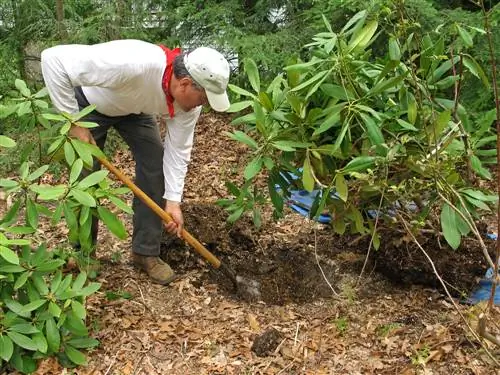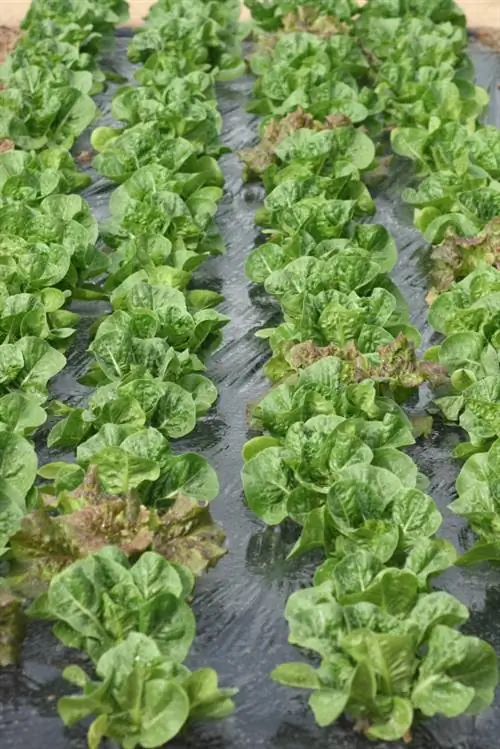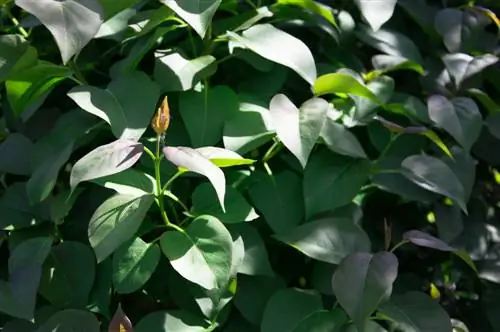- Author admin [email protected].
- Public 2023-12-16 16:46.
- Last modified 2025-06-01 06:02.
Rhododendrons take up a lot of space over time. If they have become too big, they are easy to move. You have to pay attention to the right preparation and prepare the new location well.

How to dig up and move a rhododendron?
To dig up a rhododendron, you should first tie the branches or protect them with a jute bag. Then dig up a root ball that is about three-quarters of the plant's height. Prepare the new location by digging a hole, improving the soil, and planting the plant. Next, water the soil and mulch the area around the base of the trunk.
Interesting facts
Rhododendrons are transplanted in autumn. At this point, the trees have enough time to develop suction roots before the first frost. If you missed this date, you can also transplant the flowering plants in April. It is important that the leaves have not yet begun to sprout.
Repositioning - up to what size?
Rhododendrons are shallow-rooted plants that develop a compact root ball. They do not have strong main roots and for this reason are easy to dig up. You can transplant one meter tall specimens to another location just as easily as three meter tall plants.
Procedure
So that the branches don't break during transport, tie them up with a string. Alternatively, you can put a jute bag over smaller bushes to protect them. Cut off a sufficiently large root ball whose width is approximately three quarters of the plant height.
Hole size
Dig a pit twice the width of the bale at the desired location. The hole should only be deep enough so that the rhododendron will later sit at the same level of soil as before. Ideally, you should place the ball of soil a little higher so that the top protrudes slightly from the soil. This ensures that the root system receives sufficient oxygen.
Floor
Improving the substrate creates optimal conditions for the ornamental plant to grow well in the new location. The roots do not like waterlogging and need a good supply of nutrients. A slightly acidic environment is equally important.
Ideal conditions:
- pH value: between 5.0 and 6.0
- Structure: Drainage made of sand or gravel
- Fertilization: Leaf humus and bark compost provide nutrients
Tip
Gardeners like to use well-decomposed cattle manure to improve the new location.
Follow-up
After transplanting, tread the substrate firmly with your foot and water the soil. Horn shavings serve as a long-term nitrogen supply. Cover the subsoil around the base of the trunk with about five centimeters of bark humus or mulch to prevent the soil from drying out too quickly.






